A healthy organic backyard garden is easy to accomplish if you know the basics of gardening. It takes a little more effort to grow it organically than using chemical pesticides and herbicides. Backyard gardening requires a lot of hard work. Let’s discuss the step-by-step guide on how to start organic backyard gardening for beginners below.
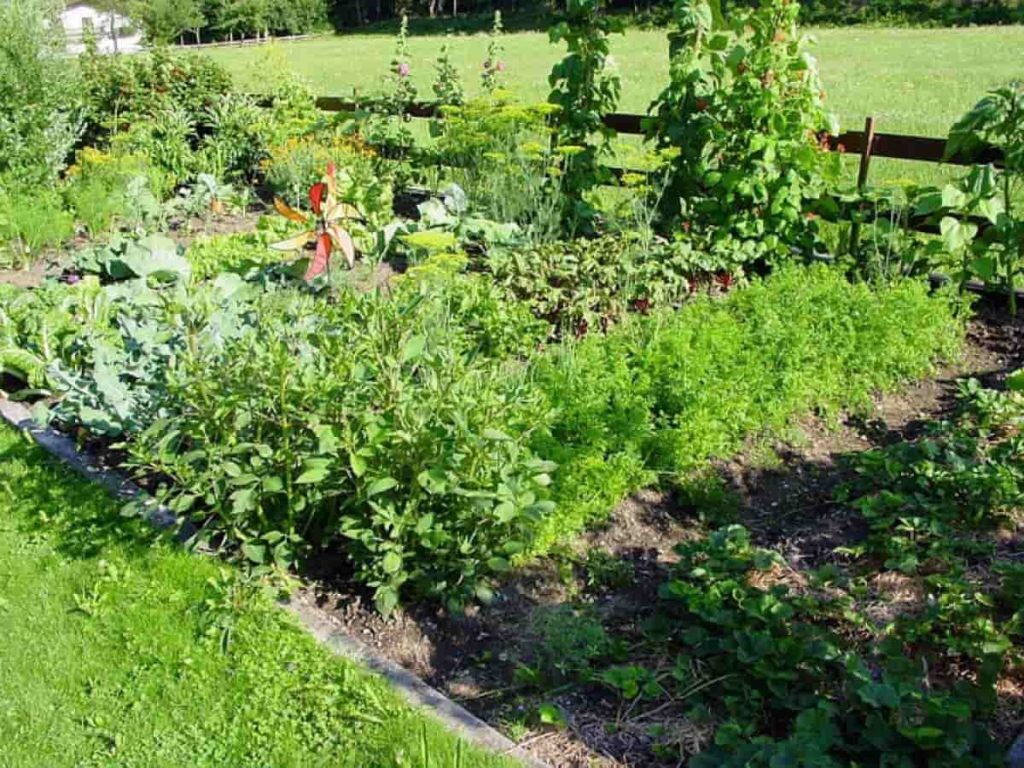
How to start organic backyard gardening
Step 1: Soil requirement for organic backyard gardening
A successful organic backyard garden starts with the soil. An excellent organic gardener will do his best to improve his land for maximum yield. Start making a compost bin. Select an area and collect organic matter such as grass clippings, leaves, and food waste. Contribute to your compost bin daily. Test your soil, and then apply the appropriate organic fertilizer.
Some important organic fertilizers include fish emulsions, seaweed extracts, bone meal, and compost. Make your garden soil as rich in nutrients as possible. If needed, buy soil from the center of your local garden to improve your soil. In extremely rocky or muddy areas, raised beds can make all the difference. Soil is the most important resource when it comes to organic backyard gardening.
It is achieved by using locally available resources in every possible way by constantly adding organic matter to the soil. If you want your backyard plants to be healthy, you must prepare the soil on which they will grow. Plants, like humans, need food, and in this case, food comes from the soil. Therefore, you must ensure that your plants get enough fresh nutrients.
Proper soil conditioning will provide your plants with all the nutrients they need. Chemical soil treatment destroys the soil structure and damages important microorganisms, insects, and bacteria in the soil. To get started, you will need to test the soil’s pH. You can purchase a home testing kit or collect some soil samples and send them to the agricultural extension office for proper testing.
In case you missed it: Organic Raised Bed Gardening: How to Start from Scratch, A Step-By-Step Guide for Beginners
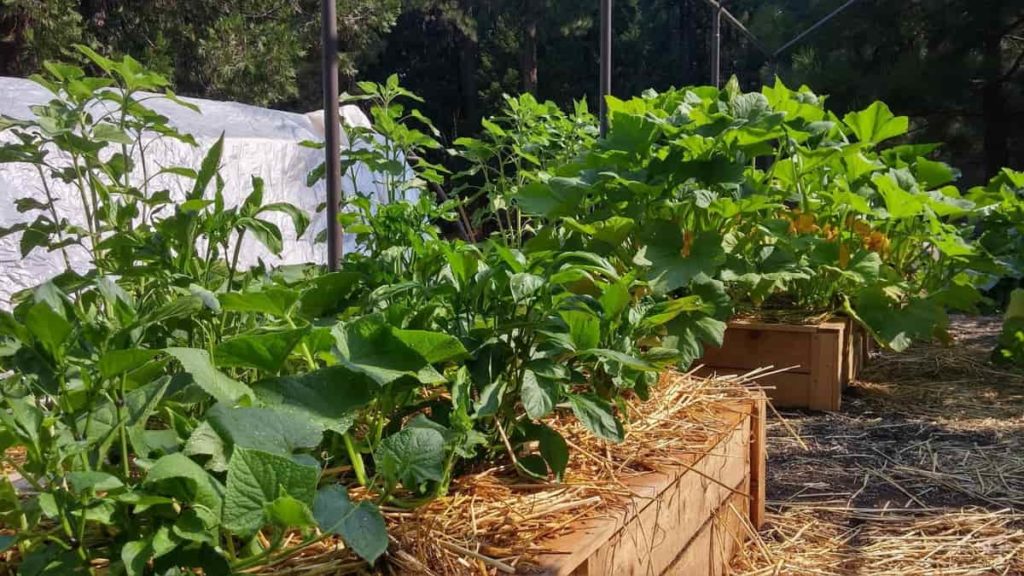
Step 2: Tips for growing plants in the organic backyard garden for beginners
- Use mulch wherever possible in your garden. Mulching will help keep your garden moist and prevent weeds from growing. Pull all weeds before you have a chance to handle them. Use organic herbicides if needed. It can be as easy as spraying pepper/water or organic soap on the plants to kill the pests. Another alternative is to use nets to protect plants from insects and small animals.
- Water in the morning helps prevent powdery mildew and other fungal diseases often spread by excess moisture.
- The longer the growing season, the more fertilizer is needed in the soil. A long growing season requires more nutrients and organic matter in the soil.
- When watering, try to water deeply and well. Frequent, shallow watering trains your plants to keep their roots close to the surface, making them less hardy and more painful when they lose water.
- Pest management begins with healthy soil. It produces healthy plants that can withstand disease and pest damage.
- Diatomaceous earth makes an excellent organic pesticide. It also forms an excellent slug barrier.
- Prepare your soil for an organic approach to pest control, encouraging beneficial microbes, other soil microorganisms, and mites. Healthy soil means getting healthy plants that can resist pests and diseases, reducing the need for harmful pesticides.
Step 3: Location for organic backyard garden
Like real estate, garden location is everything. Before investing all your energy and money in establishing a garden, you want to ensure that the place is suitable for growing vegetables, herbs, and fruits. Most garden plants need at least 8 hours of full sun a day. Too much shade will also ruin the gardener’s best efforts. Plants need more and more photosynthesis for maximum growth.
Step 4: Sunlight requirement for backyard garden
You can make your garden, but one important step is mapping your yard to the sun. You may want to plant your garden in the backyard, where you get the most direct sunlight. So, choose a clean, sunny day before the weekend of planting in your garden. Start in the morning during the first full hour of sunshine and map your yard, circling each area where there is direct sunlight.
Re-inspect your yard every two hours and create a new map showing all areas that receive direct sunlight. Look at your maps for the day as the sun sets at night. You’ll want to explore two things:
- A flat area means no slopes or hills, and
- A place where you can get many hours of sunlight throughout the day.
In case you missed it: Fertilizer Management in Sapota/Sapodilla: NPK, Organic, Time, Application, and Methods
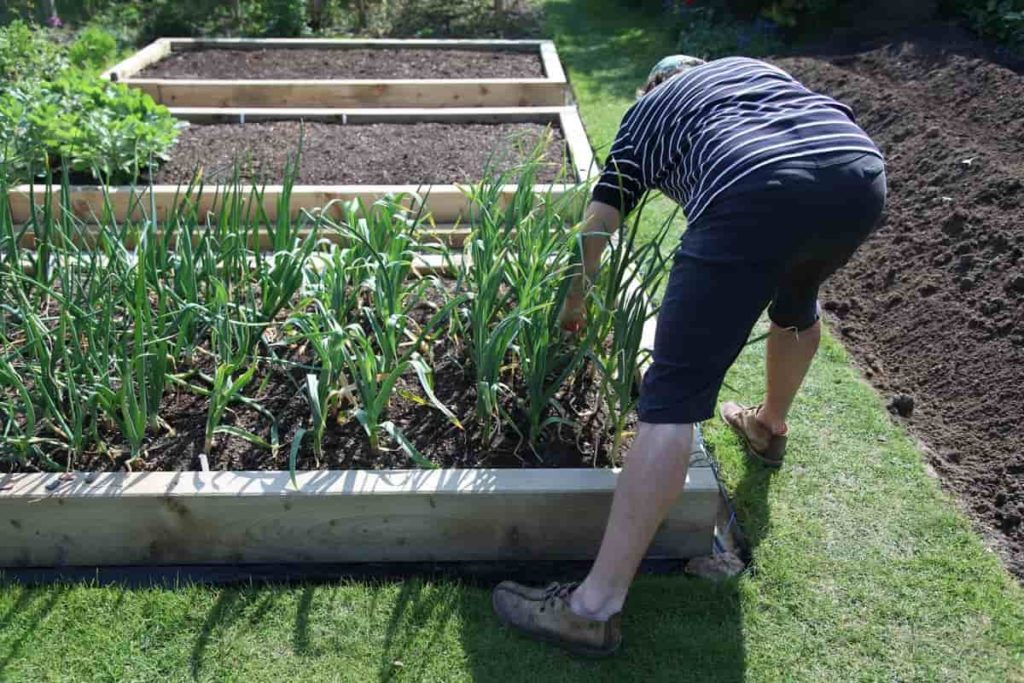
It is your winning spot for your first backyard garden. Choosing a sunny spot in your yard is an important step. A strong, healthy garden needs plenty of direct sunlight. It takes some real work to make a raised bed garden and fill it with mud. You should do this only once, and then your garden will be ready to plant more every spring, year after year. So, choose your place wisely.
Step 5: Get basic gardening tools to start backyard gardening
At the very least, when you start your garden, you will need to invest in a strong shovel and a pair of gloves. But many other trade tools can come in handy: a potting soil scoop to easily fill pots and planters, a standard kitchen knife for correct cutting during crop harvesting, and a battery-powered drill to make drainage holes when converting found items into planters. A hori-hori knife is used for splitting root clusters and other coarse garden work, pruning by hand to cut stems and branches up to 1.5 inches in diameter, and a small pruning saw designed for access tight spaces when pruning trees.
Hand Trowel and Gloves – If you do not want to get your hands dirty while planting, buy garden gloves and a small hand trowel. Otherwise, use your hands to plant and wash them thoroughly afterward. Garden hose gardens with spray nozzle require daily watering. And watering cans = tons of water back and forth for spigot (except for the smallest gardens).
Step 6: Insert raised bed garden for growing plants in the backyard
When choosing the backyard garden location, consider the landscape design that can ultimately become the plan. As you become more comfortable with the idea of a vegetable garden, you can make more beds and increase the layout of the garden and the types of vegetables on each bed. With this setting, consider planting companion plants, the idea being that you grow garden plants together that somehow benefit the other.
For example, plants such as lettuce and tomato grow well together because as tomatoes grow taller, they provide the necessary shade for lettuce. Once you have planned, decide on the type and size of garden beds. The raised beds are attractive and make it easy for you to work in your garden. Gardening in blocks or beds is easier than gardening in single rows. Raised beds must be 3 to 4 feet across, narrow enough for you to reach the center from both sides.
Raised beds should be about 8 to 10 feet long, so you can move around easily without stepping on the planting area. Start small and give each plant its place to grow. Seeds and transplants are small, but fully grown plants can grow larger, making the area more crowded and harder for plants to flourish. Place your vegetables in rows or a grid pattern inside the garden beds. The main goal is to minimize walkways and then maximize growing space. You save time and money by modifying the fertilizer and soil in the planting area.
In case you missed it: Organic Farming in USA: Crops, How to Start, A Step-By-Step Guide for Beginners
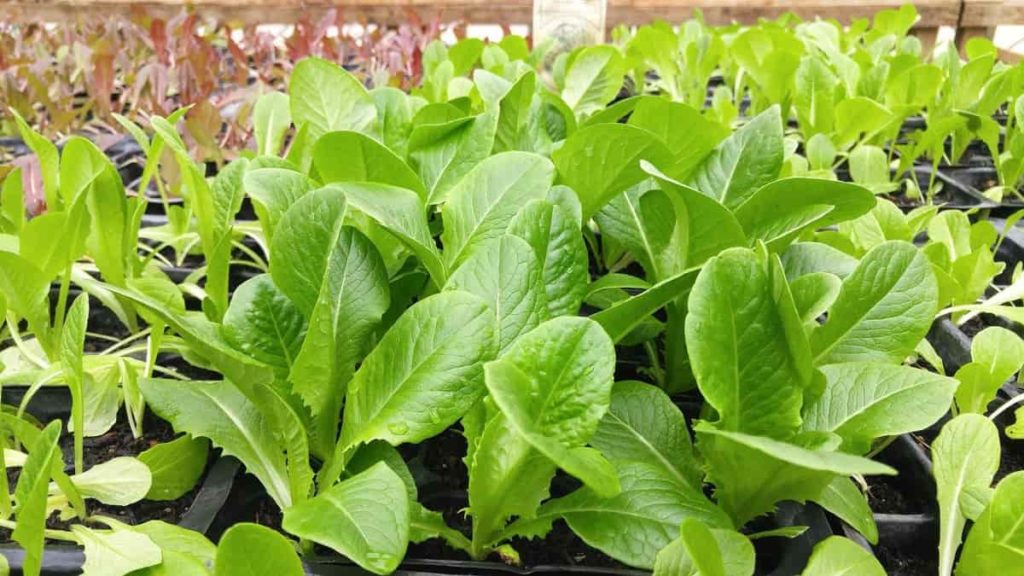
Step 7: Create an organic garden in your backyard
Take a wooden box about 1.5 to 2 feet deep, 3-4 feet long, and 2-3 feet wide. Clean it and make 5-6 small holes in the bottom to drain the water. Take some fresh soil from the garden but ensure it does not contain artificial fertilizers or pesticides. You can mix cow dung or natural manure in the soil.
Mix the soil well and cover the holes in the box with small wire mesh so that sand does not get in and then block the drainage holes. Put the mixed soil in the box. Select some flowers or plant seedlings or seeds and plant them in the soil. For your project, you should choose plants or seeds that will flower or bear fruit during your submission. Check with your local horticultural store to select the right fruit and vegetable seeds.
Be sure to water your seeds and ensure they don’t get too much sun or rain. Ensure that the drainage is not blocked or that too much water in the soil will destroy the seed. You can add more fertilizer and manure to the soil if needed, but ensure they are natural and contain no harmful chemicals.
Step 8: Choose the right plants for an organic backyard garden
Once you have prepared your garden, the next step is to choose the right plants for your garden. At this stage, soil sampling and testing will be useful. Choosing plants that can thrive in specific micro-conditions of your soil type is essential. Carefully choose plants that can thrive in different parts of your garden, depending on moisture, light, drainage, and soil quality.
Another way to grow organically is to choose the right plants for the garden. Crops that adapt well to the garden’s climate and conditions can grow with minimal input. In addition, adapting the growing crops well to the site ensures greater natural defenses. It means that a little attention and input are needed to increase the productivity of the crop.
When buying plants, make sure you go for plants that grow without synthetic chemicals or pesticides. You will find not only different plant types but also the plants that are best for your local area. Carefully choose plants that look healthy and are without overcrowded roots.
Step 9: Focus on watering your backyard plants
In addition to sunlight and soil, water is one of the most important inputs in the garden. You may want to start a garden near a water source, such as a well or a city water spigot. You can use a garden hose for watering or set up a simple irrigation system with sprinklers, soaker hoses, or drip irrigation.
Get a cheap water filter on outdoor spaghetti so chlorine and chemicals don’t get into the garden. If you sow seeds directly in the backyard garden, you will want the soil to be moist to the touch but not saturated. Check the weather from time to time so that you are available to water your garden during the dry season.
Watering the plants should not be too complicated, as long as you regularly stick your finger in the soil and maintain a pleasant moisture balance. Plan your daily watering system based on climate and season of the year. It is better to water the garden plants in the morning instead of at night as the wind blows slowly in the morning. Also, try watering the roots instead of the plants.
Step 10: Prevent weeds from an organic backyard garden
Now that you have all your organic gardening materials, it’s time to create a backyard garden. Start by laying out several layers of newspaper to completely cover the lawn in your chosen garden location. Make sure the newspaper covers every centimeter, so there is no room for grass to grow. There will always be some weeds in your garden (and that’s fine), but this will help prevent them from overtaking your plants.
In case you missed it: Fertilizer Management in Guava Trees – Organic, Liquid, Natural, NPK, and Homemade
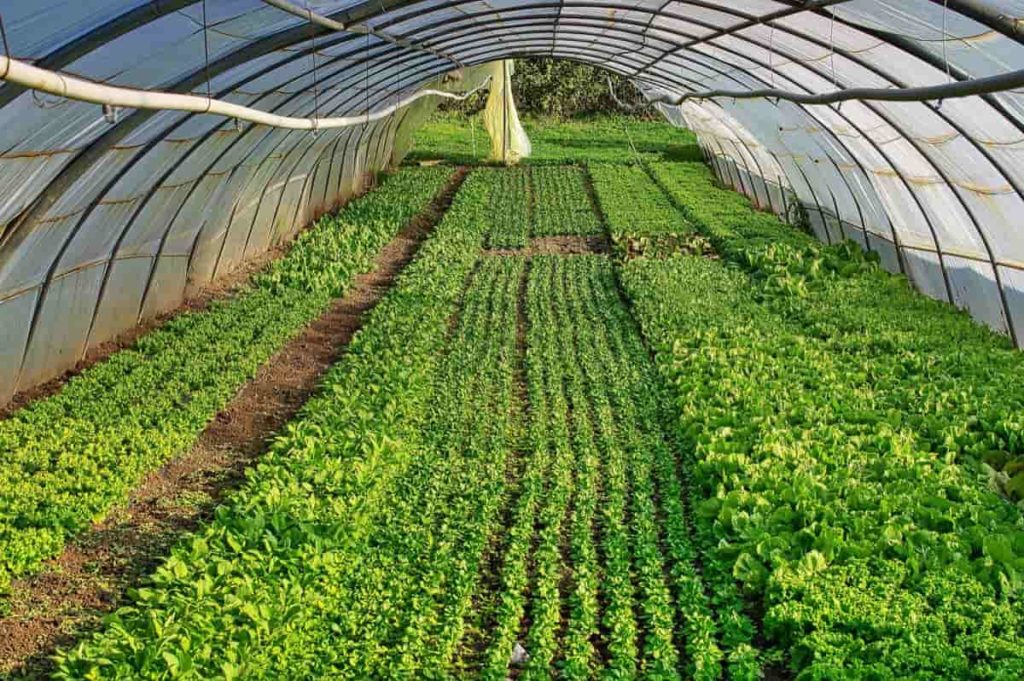
Step 11: Use mulch to get healthy plants
Mulches decompose organic matter that improves your soil suppresses weeds, and reduces your amount of watering. The best mulch around your plants in the garden bed includes fallen leaves, straw, and compost. The best mulch for pathways is wood chips and sheet mulched cardboard or newspaper (usually covered in another mulch). Using these mulches to improve the soil will prevent too many weeds or grassy headaches while welcoming mud and soil microorganisms into your garden.
Step 12: Provide nutrients to your organic backyard plants
When doing organic gardening, you must find environmentally friendly ways to protect your plants from toxic pesticides and fertilizers. Therefore, you must ensure that your plants get enough light, nutrients, and moisture to help them grow better. In addition, a diverse garden will help control pests, limiting the amount of a variety of plants and promoting biodiversity.
Instead of using chemical pesticides, organic gardening promotes beneficial pests and companion plants. Organic farmers do not need to use chemicals to eradicate pests and diseases. Maintaining a clean garden is another effective way to control organic pests. In addition to cultural pest control methods, natural sprays or pesticides can be used similarly.
They are already available from organic garden centers, and their products contain bacterium bacteria, neem oil, and minerals such as copper. Their rapid breakdown ability has led to their widespread use in place of synthetic chemical pesticides. In addition, some vegetable/fruit pests and diseases are beyond natural and organic control, so using natural sprays is required.
Fertilizing your backyard garden plants will help them grow faster and produce bigger crops. Different organic fertilizers include well-decomposed fertilizers from plant-eating critics (rabbits, sheep, chickens, horses) and pre-packaged organic fertilizers purchased online or at a local garden center. You can find different organic fertilizers at garden centers and home improvement stores.
Step 13: Keep your backyard garden clean
Many diseases spread rapidly through the dead, fallen plants. Thus, once a week (or more if possible), take a walk in your backyard garden and pick shade plants. You can sometimes pick up the infected leaf to prevent the disease from spreading throughout the plant. Throw dead or diseased plant leaves in the trash, not your compost pile.
Step 14: Pruning backyard organic garden plants
Although pruning beautiful plants can be difficult for gardeners, regular pruning keeps most plants healthy. Pruning depends on the selected plant and the climate in which you live. For example, flowering and fruiting plants like to be harvested in late winter or early spring to promote a healthy crop. Trees that bloom in the spring begin to form new buds as soon as the old ones fall off, so it is important to prune them before these new buds arrive.
And many other plants need constant pruning to stay healthy. Proper care of your plants is one of the biggest and most rewarding things you can do for your garden. Take time to clean up deadheads, weeds, mowing, and your garden. If you see stunted growth, take a closer look at the underground soil and dig up what is happening to the plant roots. Get rid of pests and diseases by taking the right steps. Water your garden plants regularly and feed them with nutrients every once in a while.
Step 15: Keep pests and diseases away from the backyard garden
Pests and diseases are more attracted to garden plants that are under pressure or have some deficiency. If you have healthy, well-nurtured plants, your problems with pests and diseases should be reduced. If your plants are affected, there may be an organic solvent. It is easy to control pests at backyard plants using plant compounds and soaps to eliminate pests that eat your plants. Then, mix neem oil, water, and a few drops of dish soap. Shake it well and spray your plants once every two weeks to keep pests away.
In case you missed it: Best Fertilizer for Herbs: Organic, Compost, Liquid, NPK, How and When to Apply
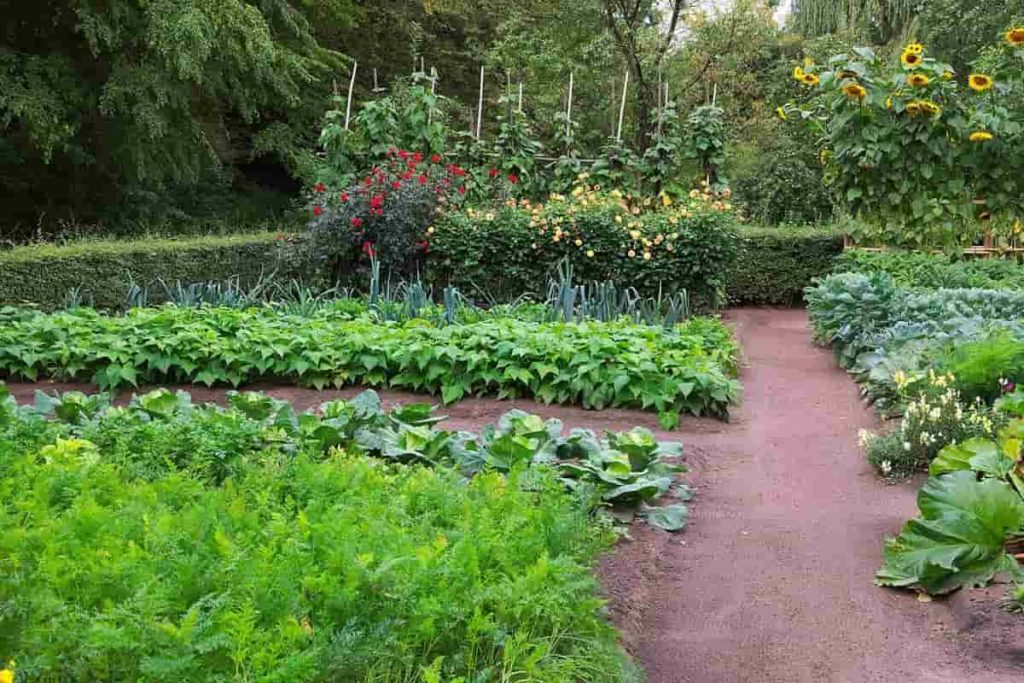
Conclusion
Organic gardening is primarily gardening without synthetic products such as fertilizers and pesticides. It includes using only natural products to grow plants in your garden. Gardening involves supporting the health of the entire horticultural system. It means working in harmony with natural systems, including soil, water supply, people, and even insects, minimizing the destruction of living and non-living things in the natural environment.
At the same time, constantly replenish the resources used during gardening. Growing organic means enjoying healthy, delicious, fresh produce free of synthetic chemicals or pesticides. The above all are simple steps toward organic backyard gardening.
- How to Make Houseplants Bushy: Effective Tips and Ideas
- Innovative Strategies for Boosting Coconut Pollination and Yield
- Pollination Strategies for Maximum Pumpkin Yield
- The Complete Guide to Chicken Fattening: Strategies for Maximum Growth
- Natural Solutions for Tulip Problems: 100% Effective Remedies for Leaf and Bulb-Related Issues
- Revolutionizing Citrus Preservation: Towards a Healthier, Greener Future
- Natural Solutions for Peony Leaf and Flower Problems: 100% Effective Remedies
- Maximizing Profits with Avocado Contract Farming in India: A Comprehensive Guide
- Natural Solutions for Hydrangea Problems: 100% Effective Remedies for Leaf and Flowers
- The Ultimate Guide to Choosing the Perfect Foliage Friend: Bringing Life Indoors
- From Sunlight to Sustainability: 15 Ways to Use Solar Technology in Agriculture
- The Ultimate Guide to Dong Tao Chicken: Exploring from History to Raising
- The Eco-Friendly Makeover: How to Convert Your Unused Swimming Pool into a Fish Pond
- Mastering the Art of Delaware Chicken Farming: Essentials for Healthy Backyard Flocks
- 20 Best Homemade Fertilizers for Money Plant: DIY Recipes and Application Methods
- How to Craft a Comprehensive Free-Range Chicken Farming Business Plan
- Brighten Your Flock: Raising Easter Egger Chickens for Beauty and Bounty
- How to Optimize Your Poultry Egg Farm Business Plan with These Strategies
- Subsidy for Spirulina Cultivation: How Indian Government Schemes Encouraging Spirulina Farmers
- Ultimate Guide to Raising Dominique Chickens: Breeding, Feeding, Egg-Production, and Care
- Mastering the Art of Raising Jersey Giant Chickens: Care, Feeding, and More
- Ultimate Guide to Raising Legbar Chickens: Breeding, Farming Practices, Diet, Egg-Production
- How to Raise Welsummer Chickens: A Comprehensive Guide for Beginners
- How to Protect Indoor Plants in Winter: A Comprehensive Guide
- Ultimate Guide to Grow Bag Gardening: Tips, Tricks, and Planting Ideas for Urban Gardeners
- Guide to Lotus Cultivation: How to Propagate, Plant, Grow, Care, Cost, and Profit
- Agriculture Drone Subsidy Scheme: Government Kisan Subsidy, License, and How to Apply Online
- Ultimate Guide to Raising Araucana Chickens: Breed Profile, Farming Economics, Diet, and Care
- Bringing Hydroponics to Classroom: Importance, Benefits of Learning for School Students
- Ultimate Guide to Raising Polish Chickens: Breed Profile, Farming Economics, Diet, and Care
- Ultimate Guide to Raising Australorp Chickens: Profile, Farming Economics, Egg Production, Diet, and Care
- Silkie Chicken Farming: Raising Practices, Varieties, Egg Production, Diet, and Care
- Sussex Chicken Farming: Raising Practices, Varieties, Egg Production, Diet and Care
- Homemade Feed Formulations for Livestock: Discover Cost-effective Starter to Finisher Feed Recipes
- 20 Best Pig Weight Gain Supplements: Top Swine Weight Gain Formulas
- Ultimate Guide to Elderberry Farming: Propagation, Planting, Yield, Cost, and Profit
Very good information.